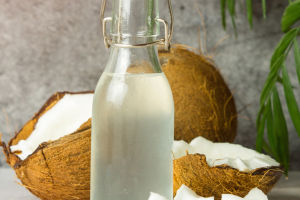Watermelon is a delicious and refreshing fruit that is popular all around the world. It has juicy sweetness and bright pink flesh, watermelon is a staple of summer picnics and backyard barbecues.
Let's explore the history, cultivation, nutritional value, and culinary uses of watermelon.
1. History
Watermelon is believed to have originated in Africa, where it was first cultivated over 5,000 years ago. It was introduced to Europe by the Moors and later brought to the Americas by European settlers.
2. Cultivation
Watermelon is a warm-weather crop that requires plenty of sunlight and water to grow. It is typically planted in the spring and harvested in the late summer.
Watermelon plants grow on vines and can produce fruit that weighs anywhere from a few pounds to over 100 pounds. There are many different varieties of watermelon, each with its unique flavor and texture.
3. Nutritional Value
Watermelon is a low-calorie fruit that is rich in vitamins and minerals.
It is an excellent source of vitamin C, which can help boost the immune system and protect against disease.
Watermelon is also a good source of vitamin A, which is important for healthy skin and eyesight.
In addition, watermelon is high in potassium, which can help regulate blood pressure and prevent heart disease.
4. Culinary Uses
Watermelon is a versatile fruit that can be eaten in many different ways.
It is often eaten fresh, either sliced or diced, and served as a snack or dessert. Watermelon can also be used to make juice and smoothies.
One of the most popular ways to enjoy watermelon is as a base for refreshing summer drinks.
Watermelon juice can be mixed with other fruits, such as strawberries and raspberries, to create a delicious and nutritious beverage.
Watermelon can also be blended with mint and lime to make a refreshing agua fresca.
Another popular use for watermelon is in salads. Watermelon pairs well with salty and savory ingredients, such as feta cheese and olives.
A simple watermelon salad can be made by combining diced watermelon with crumbled feta cheese, fresh mint, and a drizzle of olive oil.
Watermelon is also a popular ingredient in desserts. Watermelon sorbet is a refreshing and healthy alternative to traditional ice cream.
Watermelon can also be used to make popsicles, granitas, and other frozen treats.
Whether eaten fresh, used in drinks, or incorporated into savory dishes and desserts, watermelon is a versatile and tasty ingredient that is perfect for summer.


